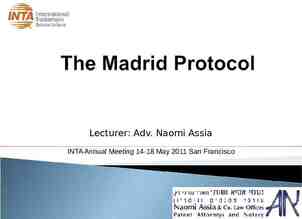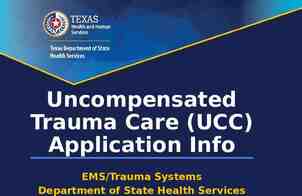Should the Government Provide Insurance for Catastrophes? By J.
14 Slides54.50 KB

Should the Government Provide Insurance for Catastrophes? By J. David Cummins Comments by Dwight Jaffee University of California, Berkeley 30th Annual Economic Policy Conference Federal Reserve Bank of St. Louis October 20-21, 2005 Page 1

Agenda I applaud the conference planners for foresight to put cat insurance on the agenda long before Katrina. It is always a pleasure and enlightening to read a paper by David Cummins; this one is no exception. My comments follow the lines of David’s paper: – Why do private markets for cat risks fail? – Should the government pick up the slack? – And if so, how is this best done. Page 2

Lack of Capital is One Root of Evil The paper begins with a cogent discussion of the key role that capital plays for insuring cat risks. – David does use a normal distribution, whereas fattailed distributions might be the relevant ones. – Still, I agree that catastrophe insurance market failures are due mainly to capital market frictions. But cat insurance failures involve other factors: Capital market imperfections are necessary, but not sufficient, for catastrophe insurance market failure. Page 3

Capital Market Imperfections are Necessary But Not Sufficient for Cat Market Failure Cases that motivate “Not Sufficient”: – Only 15 years ago, US had active private markets for hurricane, earthquake, and terrorism risks. – UK still has an active private market for flood insurance (and the Thames could flood London). – Warren Buffett pledged billions of capital to insure California Earthquake Authority in 1996. – Lloyds of London, even today, stands ready to provide terrorism insurance (at the right price). Page 4

Agency Problems For Catastrophe Insurers Finance theory suggests no special cat risk problems: – Catastrophes reflect mainly idiosyncratic risks. – Risk sharing achievable as insurers distribute equity. But insurance firm managers strongly disagree: – Edward Liddy, President Allstate, WSJ, 9/6/05: “The insurance industry is designed for those things that happen with great frequency and don't cost that much money when they do. It's the infrequent thing that costs a large amount of money to the country when it occurs -- I think that's the role of the federal government”. Buffett and Lloyds avoid these agency issues. Page 5

Zealous Regulators and Daffy Consumers Regulators compound problem by restricting the use of reinsurance and similar risk-sharing instruments: – Insurers may not pass on full costs of reinsurance. – Capital haircut applied to offshore reinsurers. Consumers are not always rational in evaluating the contracts and prices offered by insurers: – Aversion to high deductibles is one problem. – Policyholders seem to have overly optimistic view of expected losses (asymmetric information) Page 6

Other Issues Seem Less Fundamental Quantifying risk parameters is not a major issue: – “Parameter uncertainty” was long ago dismissed as issue for CAPM, and Froot confirms for cat. – Telecommunications satellites were “insurable” from very first launch. Same for liability lines. Time diversification is not necessarily intrinsically harder than cross-section diversification. – Indeed, less asymmetric information in time. Current quantitative estimates of insurer reserves are not relevant since firms do not offer cat lines. Page 7

When Private Markets Fail, Is Government Insurance the Answer? Citizens reasonably call on government to fix failure. – Immense social benefits of insurance and risk sharing. – Risk sharing is intrinsically/uniquely a social activity. Proposition: Government plans should mimic as closely as possible what private market would do. – No subsidies, because otherwise: » People induced to put themselves in harm’s way. » Creates pork barrel requests by industries/regions; » Crowds out private market initiatives. – Risk-based premiums proper incentive to mitigate. Page 8

How Government Insurance Actually Works We observe wide range of interventions, from free reinsurance for terrorism (TRIA) to full government insurer entities (flood and earthquake). Hurricane is combination. These plans are uniformly disappointing: – 14% take-up rates for earthquake (CEA). – 2% of NFIP properties create 33% of claims. – Hurricane is barely hanging on in many states. – TRIA has a variety of flaws. Page 9

National Flood Insurance Program (NFIP) What’s Wrong with this Picture? Federal Flood Insurance Program 50%*Premiums Losses 1300 1200 1100 1000 900 700 600 500 400 300 200 100 Page 10 200 4 200 3 200 2 200 1 200 0 199 9 199 8 199 7 199 6 199 5 199 4 199 3 199 2 199 1 199 0 198 9 198 8 198 7 198 6 198 5 198 4 198 3 198 2 198 1 198 0 197 9 0 197 8 Millions 800

National Flood Insurance Program (NFIP) Breakdown was Predicted: GAO-01-992T Congress requires actuarial premiums/high standards on new homes, but deep subsidies on grandfathered homes. – 19,600 towns now on Flood Insurance Rate Map (FIRM). – Average new home rate is 310; annual subsidy is 610. Expected losses on grandfathers are 5 times new homes. – 38% of claims are repetitive on same property Often these homes had cumulative losses house value NFIP may just buy out these owners to save money! UK has a well functioning private market for flood risks. – Association of British Insurers (www.abi.org.uk/flooding) – A private/public partnership in which government “guarantees” levees and requires good upstream practices. Page 11

What to Do About TRIA? (Terrorism Risk Insurance Act) TRIA has December 2005 sunset. Fierce battle to extend: – Government agencies favor sunset. – Insurance, building, mortgage industries want to renew Current plan has many unique (perplexing) features: – Provides free reinsurance (covers only high risk tiers) Firms have substantial deductibles and co-insurance. – Government is to recoup first 15 billion of payments with ex-post levy on all commercial policyholders. – Then taxpayers pay bill to 100 billion ceiling. Encourages more trophy buildings in high risk locations. But same new construction/grandfather issue as flood. Page 12

What to Do About the California Earthquake Authority (CEA)? Key problem is the 14% take-up rate, which seems to be a disaster in waiting. – Consumers feel premiums are too high (Common premium base homeowner policy). – Premiums, by law, are actuarially determined; but in practice they have been tempered. – Dispute between Seismologists and Geologists. – Consumer particularly dislike 15% deductible, but also reject new 10% deductible. A mandatory insurance requirement is a bad idea. Page 13

How to Keep the Government Out of the Insurance Business Fully agree with David regarding what should be the two key forms for government intervention: – Government must remove regulatory impediments to Catastrophe Bonds – Let government auction reinsurance rights. Government as Lender of Last Resort, not Insurer of Last Resort, should be considered. – Proper solution if issue is post-event liquidity (and not simply unwillingness to bear risk). Page 14






